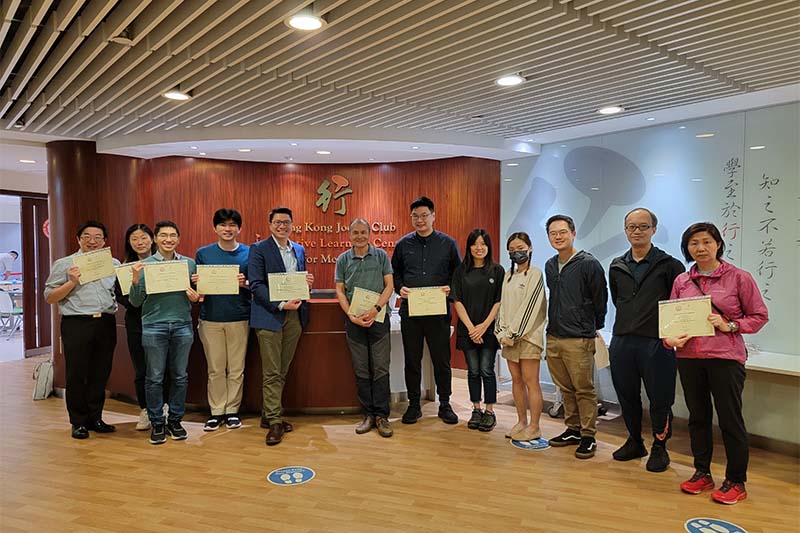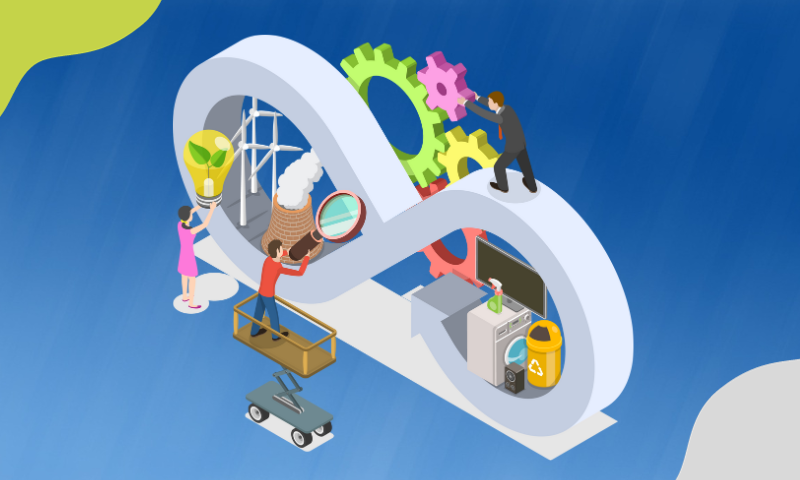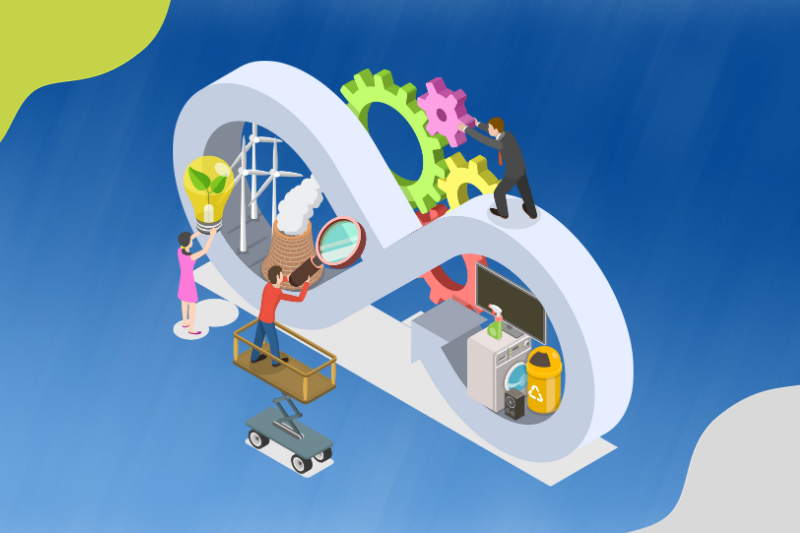
香港學者:考古成為文化「通用語」 (Chinese Version Only)
9 November 2023
Nurturing Medical Professionals to be Pioneer in Medical Education Research
16 November 2023A Policy Framework for the Circular Economy to Achieve Sustainability

Principal investigator: Prof Kris HARTLEY (Department of Public and International Affairs)

The traditional linear economy, which adopts the “take-make-dispose” model, is not sustainable and has created environmental challenges. By contrast, the circular economy (CE) is seen as more environmentally-friendly and in some ways better fits the imperatives of the United Nations Sustainable Goals (SDGs). The CE has been promoted as a strategy for altering the product end-of-life concept through reuse and recovery of material byproducts from production and consumption. While recent scholarship has investigated policies for CE transition, few studies take a perspective on circularity that spans geographies, industries, and product life-cycle stages.
Recently Professor Kris HARTLEY, Assistant Professor in CityU’s Department of Public and International Affairs, published a research article entitled “A policy framework for the circular economy: Lessons from the EU” in the Journal of Cleaner Production. The article aims to fill a CE research gap by introducing a policy framework for CE that includes over 100 policy instruments. The article is part of Kris’s broader research agenda to understand new public policy models for 21st century challenges.
The development of the study’s framework is based on a review of 572 studies published in the academic and grey literature, along with policy databases and other documents. Policy documents from European Union (EU) agencies and offices were used as a starting point to develop an overview of policy options. The EU was selected as a case context because, as a policymaking body, it has adopted some of the most advanced and detailed CE policy frameworks in the world. The study then draws on insights from 33 semi-structured interviews with international policy experts, in order to validate and refine the content and structure of the framework. The interviewees were consulted about the validity and usefulness of the framework, and requested to provide input about how it could be improved. Finally, the revised framework was evaluated for its practicality and intuitiveness.
Based on the data analysis, the research team identified nine policy categories: six pertaining to the life-cycle and three pertaining to overarching themes. Two policy pillars, their respective policy categories, and policy groups within each category, are included in the framework. Policies in Pillar 1 address life-cycle-stages of products or services. Life-cycle-stages include design, material and energy input, production, use/consumption, circulation, and leakage. Policies in Pillar 2 cut across some or all of the life-cycle stages mentioned in Pillar 1, outlining three categories: (i) policies increasing the (economic) competitiveness of the CE, (ii) policies actively supporting the CE through mostly ‘soft’ measures, and (iii) policies that help to measure the CE.
The framework categories and associated policy instruments fit together holistically to reflect a cohesive strategic orientation towards systemic and comprehensive transition. Overall, the life-cycle-stages-specific policies accord with the long-running discourse about how materials progress through a production system. This life-cycle approach is intuitive in that it bears a generally chronological order from inputs through design, production, consumption, circulation, and leakage. The framework is theoretically novel in that it integrates the life-cycle perspective with an accompanying set of high-level policy domains relevant to CE transition (i.e., incentives, ancillary institutional support, and monitoring and evaluation).
The framework highlights practical pathways for pursuing CE transition at a holistic level. It also highlights opportunities for additional research based on the unevenness of CE literature coverage found across life-cycle stages. It provides insights for future research directions to further study policy enablers for CE transition – not only the characteristics of individual policies but also how they fit together across a panoply of policy domains like infrastructure, education, and commerce. This high-level perspective is crucial for facilitating the systemic change needed in CE transition. In addition to advancing theory, the framework can also serve as an assessment lens for designing circular economy policies.
Kris’s research into CE transition is ongoing, with several other articles published in 2023 including studies of CE business model implementation, evolution of CE definitions in the academic literature, models for measuring CE transition, and the dynamics of mission-oriented sustainability policy. His upcoming CE publications will address scale-up of CE-based startups, CE transition by water utilities in Scotland, and CE as a framework for crisis response. Kris will also be conducting research about the use of AI by governments in sustainability transition.
Achievement and publication
Hartley, K, Schülzchen, S, Bakker, CA & Kirchherr, J 2023, ‘A policy framework for the circular economy: Lessons from the EU’, Journal of Cleaner Production, vol. 412, 137176. https://doi.org/10.1016/j.jclepro.2023.137176
